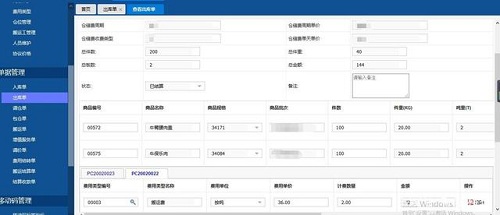Utilize the cold storage management system to reduce the work of entering and leaving the warehouse
At present, domestic cold storage management generally adopts manual + paper documents + excel management mode to complete daily billing, storage, delivery, warehouse adjustment, expense settlement, data collection, report production and other business links. Therefore, cold storage management The efficiency is low, the cost is high, and the cold storage that can be managed is small. With the continuous development of the scale of the company, the number of commodity types in the cold storage is increasing, the frequency of entry and exit has increased sharply, and the management of the cold storage has become very complex and diversified. The traditional manual cold storage operation mode and data collection method have been difficult to meet the cold storage business. Demand. For this reason, improving the informatization level of cold storage has become an important goal of enterprise development.
The standard cold storage management system adopts barcode technology development, B/S structure, combined with PDA handheld machine on-site operation, automatic cargo location feedback, multi-post collaborative task handling mechanism, etc., which can effectively improve the efficiency of cold storage management, save labor costs, and improve Service Level.

Main business process of cold storage management system
1. Billing is more accurate and fast
Inbound and outbound billing adopts the electronic billing and printing process, which avoids the problems of illegible handwriting and wrong writing in manual writing, and it also facilitates future recording, search, statistics and modification, and improves work efficiency.
2, PDA storage process
After the goods arrive in the warehouse, the tally clerk uses the PDA device to inspect the goods and affixes the mobile code label to realize the management of one mobile code per board. The warehouse clerk uses the PDA to pull the pallet bound with the mobile code into the cold storage, scan the mobile code and the location bar code to realize the binding of the pallet and the location, and automatically transmit the data to the system to update the owner and the location in real time. Location inventory.
In addition, every time the goods are successfully put into the warehouse, the inventory card can be printed out and handed over to the owner of the consignor, which has been used as a proof of collection.
3, PDA delivery process
After receiving the outbound order, the warehouse clerk uses the PDA device to scan the batch code of the goods on the outbound order, and displays the location of the goods in real time, and then goes to the location, scans the mobile code, enters the quantity and submits the data. Real-time return to the system, real-time update of the owner and location inventory.
4, PDA adjustment process
After receiving the order to adjust the warehouse, the warehouse keeper uses the PDA device to scan the batch code of the goods on the warehouse order, and displays the location of the warehouse in real time. Then he goes to the location, scans the mobile code, and then pulls the batch of goods to Just scan the bar code of the appropriate location, and the data will be sent back to the system in real time to ensure that the goods and location are consistent in real time.
5. Cost carry-forward settlement
At the beginning of each month, managers only need simple operations to automatically carry forward and settle the cost details of each shipper, saving a lot of manpower and material resources, and ensuring the accuracy of the cost. At the same time, it can also print the shipper’s expense report to allow The owner understands the expenses incurred this month, so that he can receive the remittance faster.
Cold storage management system characteristics
1. It can standardize the daily warehousing operation process. It is no longer like holding paper receipts while picking the side signs. It prevents human errors and greatly improves the efficiency of warehousing.
2. Improve the utilization rate of cold storage locations, increase the throughput of cold storage, and increase the income of cold storage.
3. Each inbound goods has a batch code, through which the first-in-first-out and batch-by-batch delivery can be implemented to enhance the customer service experience.
4. The cold storage fee supports the mode of zero storage and package storage. The zero storage is calculated on a daily basis and the unit is per ton/board/piece. The storage fee is calculated on a daily and monthly basis, and inventory can also be managed.
5. Support a variety of automatic fees, such as handling fees, disposal fees, distribution fees, warehouse disposal fees, value-added service fees, etc., to flexibly meet the needs of cold storage billing.
6. There is no need to collect data manually. The data is automatically collected and synchronized to the system, reducing the workload of input and ensuring real-time and accurate data.
7. All kinds of inbound and outbound ledgers, details, and total cost of cargo owners are all available. Big data intelligent analysis supports users' operational decision-making.


